David Nash of Edgartown was in the process of explaining how artificial fly lures are made when a neighboring fisherman’s rod bowed toward the water. A distinct whirring sound zipped through the air and the angler’s line raced out into Edgartown Harbor.
Mr. Nash looked up.
“That’s the sound of an albie.”
The other angler, Patrick Carson of northern Ireland, was barefoot and ankle deep in the harbor. For 10 minutes, he splashed along the shore as the fish swam back and forth, its silvery flash occasionally visible. The other fishermen on the beach stopped their casting and walked over to watch.
“This is what I come three thousand miles for,” said Mr. Carson, a 14-time member and former captain of the Irish Fly Fishing Team.
Mr. Carson reeled the false albacore in, knelt to remove the hook from its mouth, and vigorously pushed the fish back into the water, thus forcing oxygen back through its gills and allowing it to swim off. He estimated it was about 7 pounds, too small to attempt a weigh-in for the Derby leader board.
More than any other division in the annual Striped Bass and Bluefish Derby, the flyrod category is less about making it to weigh-in and more about the actual act of landing a fish. There aren’t many entrants in the category, typically anywhere from 250 to 300 in a given year, as compared to the Derby total of about 2,500. Some fishermen have both flyrod and all-tackle Derby pins. Mr. Nash, for example, fly fishes about 75 per cent of the time. Cooper Gilkes, owner of Coop’s Bait and Tackle, says his fly/all-tackle split is about 50-50.
Mr. Gilkes took up fly fishing at the age of 12. He was fishing off Second Bridge in Edgartown when he noticed that the older gentleman next to him was fishing with a fly rod and catching striped bass while his own line went untouched. The gentleman, Roger Sylvia, taught Mr. Gilkes fly fishing techniques that Mr. Gilkes continues to pass on. He and Mr. Nash held a fly fishing clinic during last week’s American Heroes Saltwater Challenge.
“I really enjoy it,” Mr. Gilkes said on Monday afternoon as he repaired a traditional reel (with a touch of irony) behind the counter of the shop. “It’s peaceful, it’s quiet ... it’s like one-on-one with the fish.”
It’s not that he doesn’t like traditional spin-reel fishing. It’s just that when you take up fly fishing, you make the decision to go all in. The element of personalization is far more evident in fly fishing, from the hand-tied flies (using bait is prohibited in this division) to the mastery needed just to cast a line. Do or do not, as Yoda would say. There is no try.
When using a traditional spin rod, a fisherman makes a cast and the weighted lure on the end of the line keeps the line spooling out. With a fly rod, the fly itself is too lightweight to create any sort of trajectory, so the distance of the cast is dependent on casting technique and the weight of the line itself. Energy is transferred from the angler to the rod to the line using a controlled pendulum motion of the upper body. Those in the path of a fly fisherman should walk in a wide circle behind them.
“It’s far more relaxing [than spin fishing],” Mr. Nash said. “There is a rhythm to the casting that gets into your head.”
Still, the casting is “inherently less efficient,” said Brice Contessa, a self-described “converted conventional fisherman,” as is the case for nearly all those who use flyrods. Mr. Contessa fishes exclusively flyrod in the Derby; he took up the sport at age 15 and “never really looked back.”
Mr. Contessa described the difference between spin fishing and fly fishing as akin to that between hunting using a gun versus hunting using a bow, or alpine skiing versus the more technical Telemark skiing.
“It’s about the ‘How’,” he said.
“I like the challenge of it,” said Justin Pribanic of Vineyard Haven and Pennsylvania. “You’re always doing something; you have to be focused on it.” Mr. Pribanic, like Mr. Contessa, uses only flyrod in the Derby and fishes from the shore. He’s caught a hat trick of fish so far, but hasn’t yet landed the elusive bonito. As of Thursday, nobody in the fly division had landed a shore bonito.
No shore fly fisherman has had a Grand Slam catch since Chip Bergeron in 1995. Mr. Contessa caught a boat Grand Slam in 2008.
The weights of these fish tend to be less than those caught in the All-Tackle division: the current leading boat bass, caught by David Rimmer, is 20.96 pounds compared to the 44.04 pound All-Tackle striper. But large fish can still be landed using a fly. Mr. Gilkes has reeled in 80-pound bluefin tuna and tarpon in the Bahamas. Mr. Contessa once caught a hundred-pound shark using an orange-red fly designed to mimic blood in the water.
The flies themselves, so named because fly fishing got its start in freshwater where fishermen designed lures to imitate bugs that trout like to eat, are major factors in the appeal of the sport. The back wall of Coop’s Bait and Tackle is filled with plastic baggies of fly materials which include colorful feathers, dyed bucktail and the curiously-named synthetic “Sparkle Hair.”
Neon colors and flash aside, “they’re all made to mimic baitfish,” Mr. Gilkes said. “It’s a ball tying them.”
“It’s almost like an art form,” Mr. Contessa said. “It’s very satisfying to catch fish on a fly you tied, because then you did everything.”

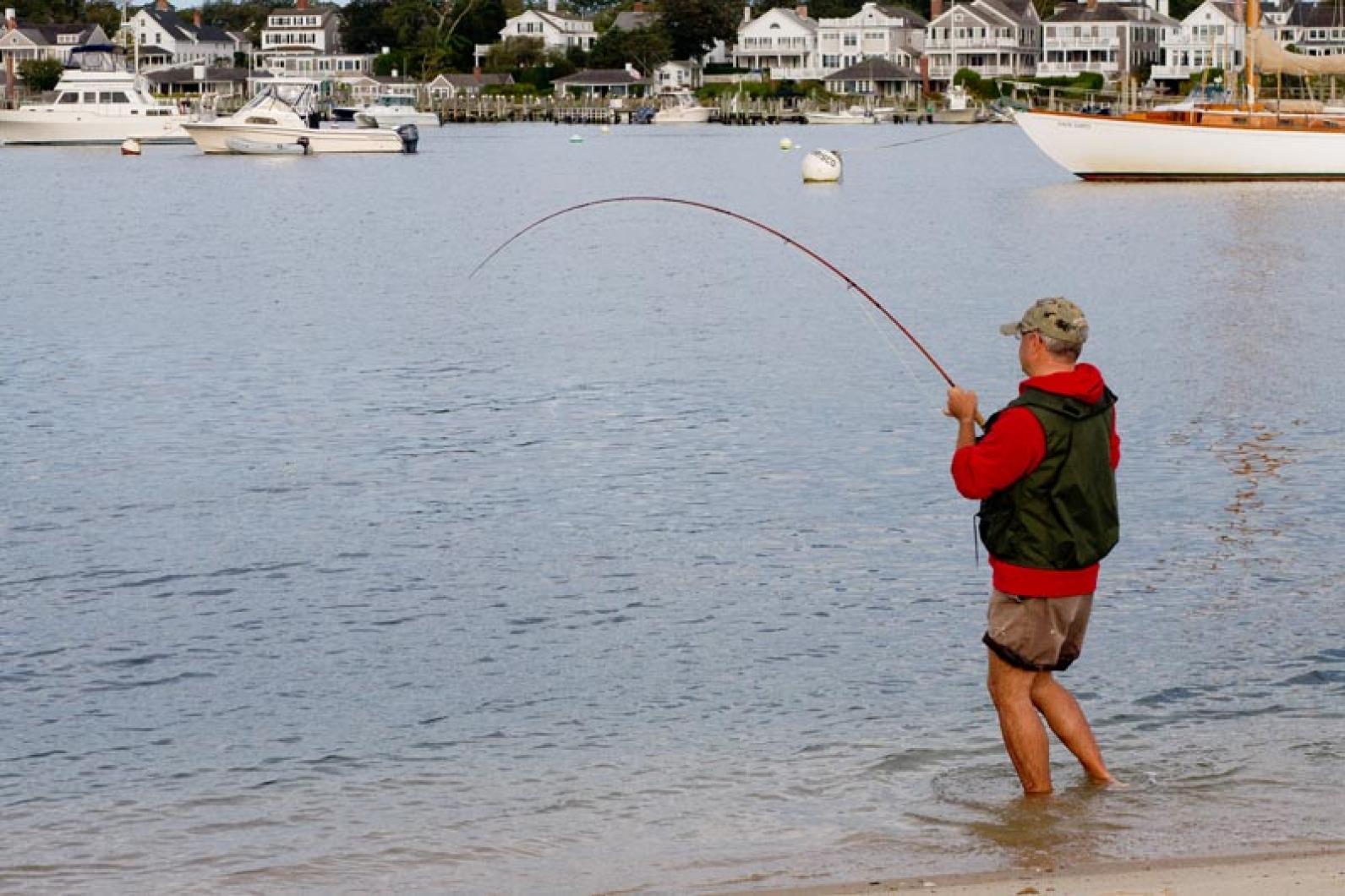
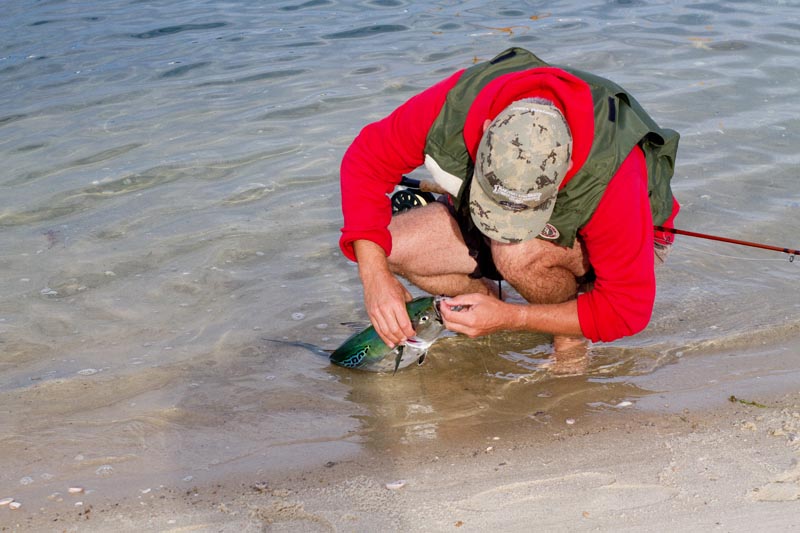
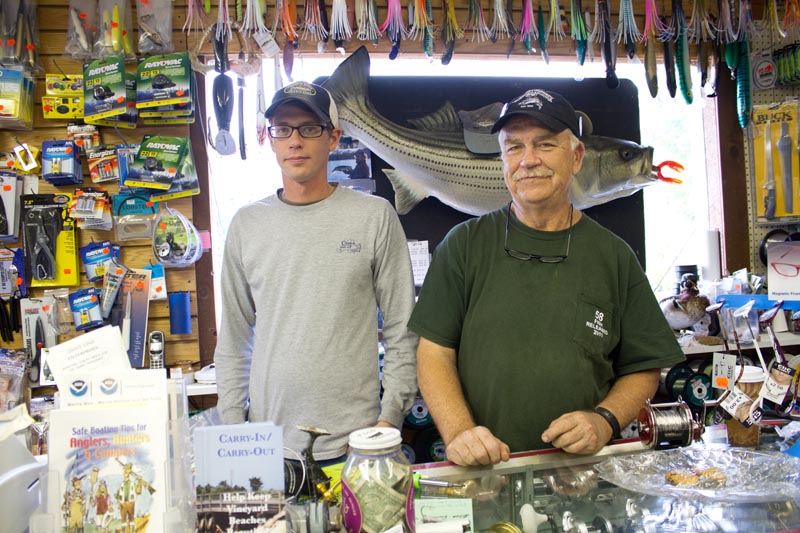
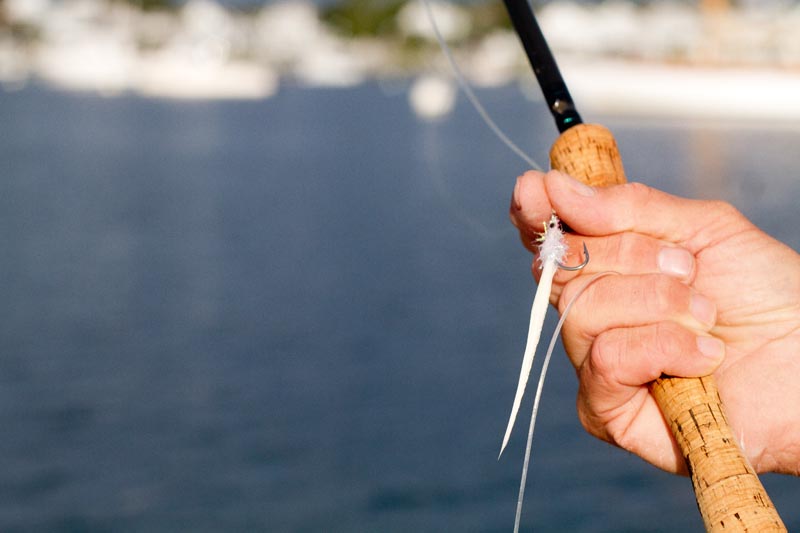
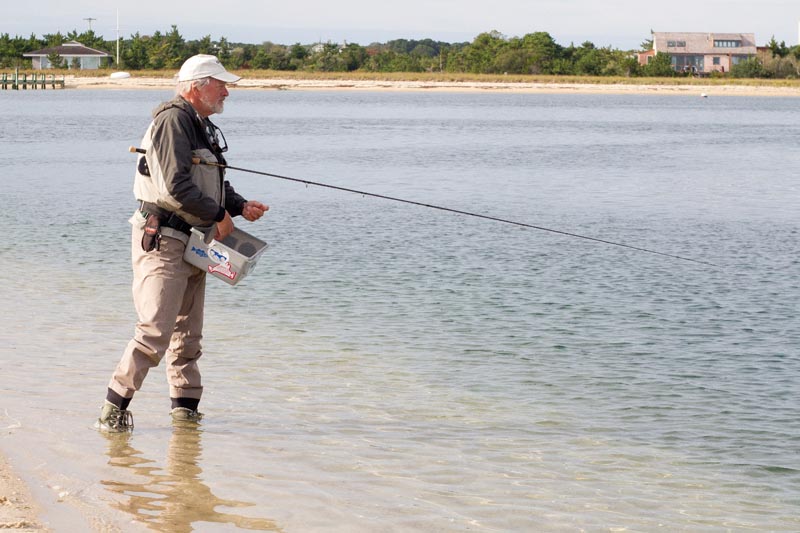




Comments
Comment policy »